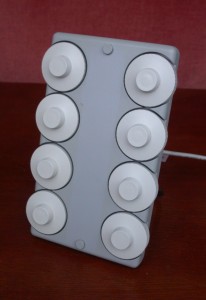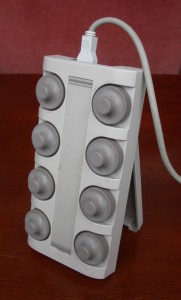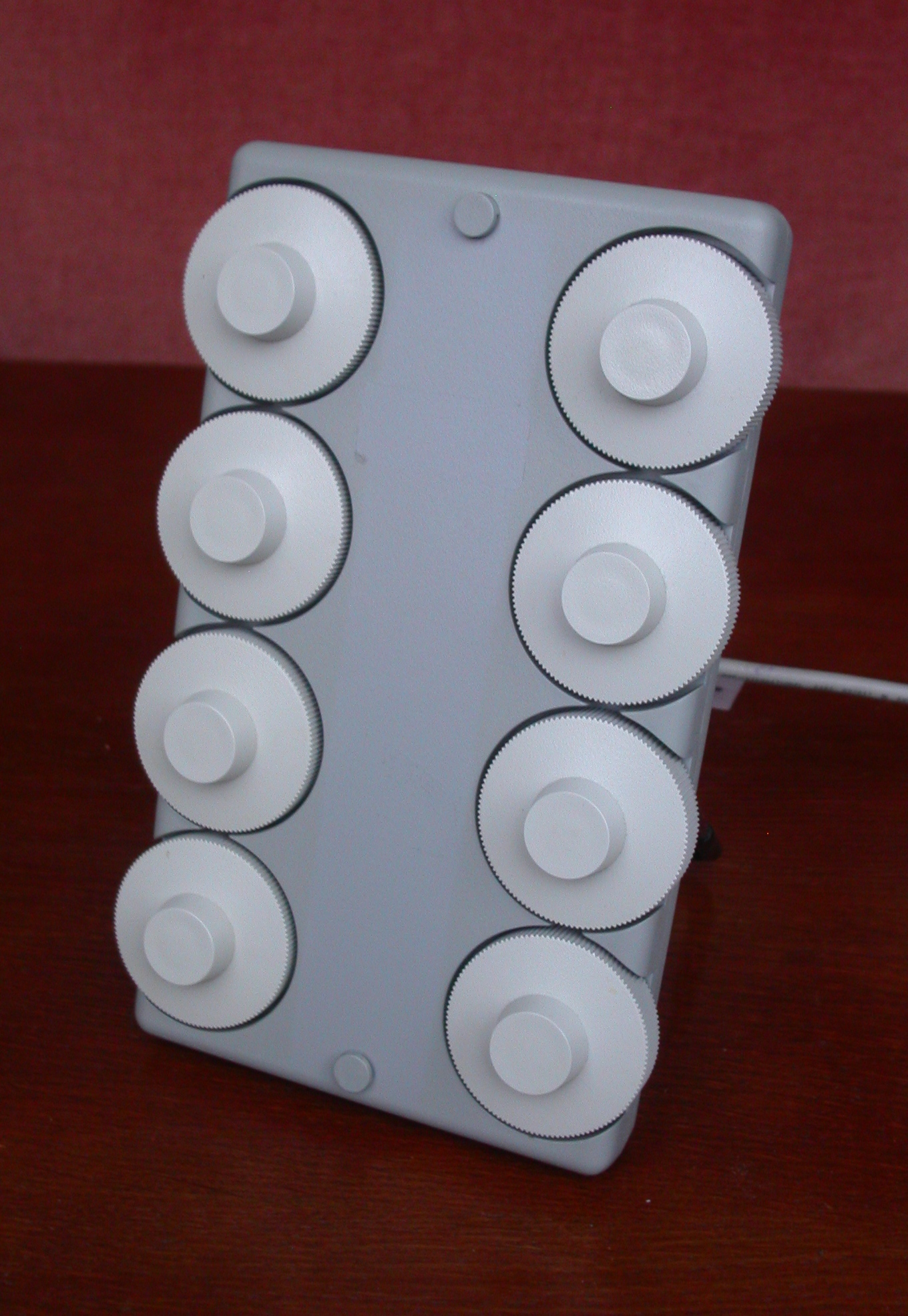I obtained a few Silicon Graphics (SGI) dial boxes. They have RS-232 serial port interfaces. I figured out the pinouts based on the circuit boards and plan to use these as controllers for some audio generators. Some of the PCB is blank and could be removed to clear room for buttons and an additional audio generator processor to interface directly with the processors in these units using a 5 V serial interface, bypassing the RS232 driver/receiver chips.
SGI DLS80-1022

The DLS80-1022 dial box (PCB: 109202-0001, Rev D) has a Motorola MC68HC705C8a processor, a Texas Instruments uA9636 driver and uA9637 receiver. The pinout at the DE-9 port is:
- POWER IN +12 V
- NC
- POWER IN +5 V
- GND
- SERIAL OUTPUT (±12 V)
- NC
- SERIAL INPUT
- NC
- POWER IN -12 V
Eight rotary encoders with thin metallic chopper wheels are built on the PCB. They are attached using Torx screws that have been set really tight. The enclosure is also closed using Torx screws but these came off easily even with a hex bit.
SGI SN-921

The SN-921 dial box (PCB: 37020-0841-03, DIAL2, Seiko Instruments Inc., MADE IN JAPAN) has a HD6301X0D64P processor and a Linear Technology LT1081CN driver-receiver. The pinout at the DE-9 port is:
- GND
- SERIAL OUTPUT (±9 V)
- SERIAL INPUT
- POWER IN +5 V
- POWER IN +5 V
- NC
- NC
- GND
- NC
There are eight easily removable COPAL RES20-50-200 rotary encoders in the unit. The ±9 V serial port output voltage is generated from +5V by a charge pump in LT1081CN. The +5 V power can be alternatively supplied through a separate power connector.
